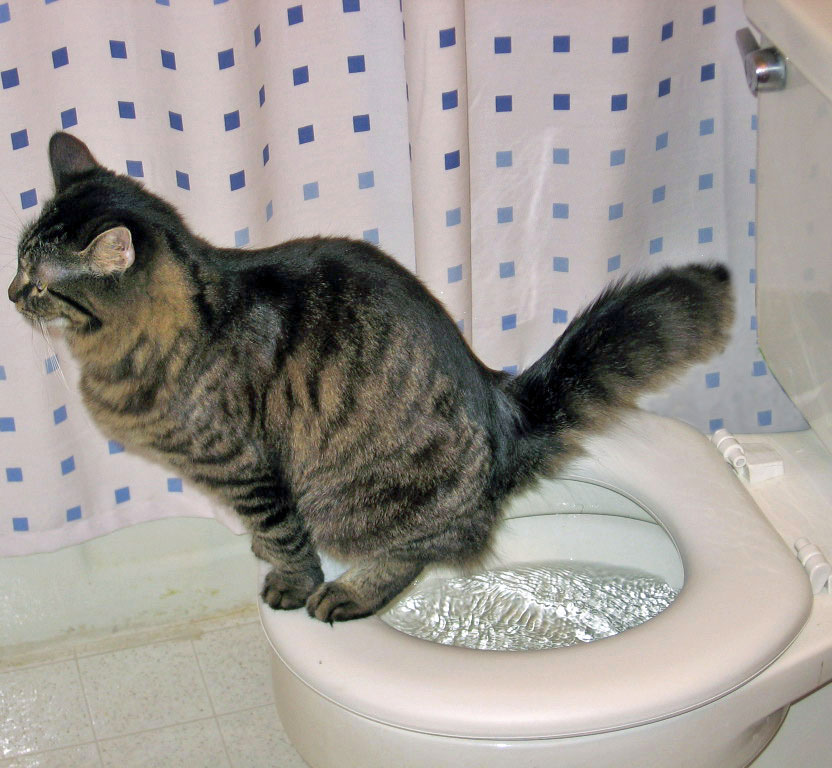What are your thoughts on How to Dispose of Cat Poop and Litter Without Plastic Bags?

Intro
As cat proprietors, it's necessary to bear in mind exactly how we dispose of our feline friends' waste. While it may appear hassle-free to purge pet cat poop down the toilet, this practice can have destructive consequences for both the atmosphere and human wellness.
Alternatives to Flushing
Luckily, there are much safer and much more accountable means to deal with cat poop. Consider the adhering to choices:
1. Scoop and Dispose in Trash
The most common approach of dealing with feline poop is to scoop it into an eco-friendly bag and toss it in the garbage. Make certain to utilize a specialized litter scoop and get rid of the waste immediately.
2. Usage Biodegradable Litter
Select naturally degradable feline litter made from materials such as corn or wheat. These trashes are eco-friendly and can be securely disposed of in the garbage.
3. Bury in the Yard
If you have a yard, take into consideration burying feline waste in an assigned area far from veggie yards and water resources. Make sure to dig deep sufficient to avoid contamination of groundwater.
4. Install a Pet Waste Disposal System
Purchase a pet dog garbage disposal system especially designed for cat waste. These systems use enzymes to break down the waste, lowering odor and environmental influence.
Health and wellness Risks
Along with ecological worries, flushing pet cat waste can likewise pose health threats to humans. Feline feces might include Toxoplasma gondii, a bloodsucker that can create toxoplasmosis-- a potentially extreme health problem, particularly for pregnant women and people with weakened body immune systems.
Environmental Impact
Purging cat poop presents hazardous pathogens and bloodsuckers right into the supply of water, positioning a substantial risk to marine environments. These contaminants can adversely influence aquatic life and compromise water quality.
Verdict
Responsible pet dog ownership prolongs past offering food and shelter-- it additionally entails appropriate waste management. By avoiding purging cat poop down the toilet and opting for alternate disposal approaches, we can decrease our ecological impact and protect human health.
Why Can’t I Flush Cat Poop?
It Spreads a Parasite
Cats are frequently infected with a parasite called toxoplasma gondii. The parasite causes an infection called toxoplasmosis. It is usually harmless to cats. The parasite only uses cat poop as a host for its eggs. Otherwise, the cat’s immune system usually keeps the infection at low enough levels to maintain its own health. But it does not stop the develop of eggs. These eggs are tiny and surprisingly tough. They may survive for a year before they begin to grow. But that’s the problem.
Our wastewater system is not designed to deal with toxoplasmosis eggs. Instead, most eggs will flush from your toilet into sewers and wastewater management plants. After the sewage is treated for many other harmful things in it, it is typically released into local rivers, lakes, or oceans. Here, the toxoplasmosis eggs can find new hosts, including starfish, crabs, otters, and many other wildlife. For many, this is a significant risk to their health. Toxoplasmosis can also end up infecting water sources that are important for agriculture, which means our deer, pigs, and sheep can get infected too.
Is There Risk to Humans?
There can be a risk to human life from flushing cat poop down the toilet. If you do so, the parasites from your cat’s poop can end up in shellfish, game animals, or livestock. If this meat is then served raw or undercooked, the people who eat it can get sick.
In fact, according to the CDC, 40 million people in the United States are infected with toxoplasma gondii. They get it from exposure to infected seafood, or from some kind of cat poop contamination, like drinking from a stream that is contaminated or touching anything that has come into contact with cat poop. That includes just cleaning a cat litter box.
Most people who get infected with these parasites will not develop any symptoms. However, for pregnant women or for those with compromised immune systems, the parasite can cause severe health problems.
How to Handle Cat Poop
The best way to handle cat poop is actually to clean the box more often. The eggs that the parasite sheds will not become active until one to five days after the cat poops. That means that if you clean daily, you’re much less likely to come into direct contact with infectious eggs.
That said, always dispose of cat poop in the garbage and not down the toilet. Wash your hands before and after you clean the litter box, and bring the bag of poop right outside to your garbage bins.
https://trenchlesssolutionsusa.com/why-cant-i-flush-cat-poop/

Do you really like reading about Don’t flush cat feces down the toilet? Give a remark below. We would be glad to know your insights about this write up. Hoping to see you back again in the future. Enjoyed reading our write-up? Please share it. Help other people discover it. I am grateful for your time. Kindly check up our website back soon.
Contact Us Today
Comments on “Avoid Plumbing Problems: Don't Flush Cat Poop Down Your Toilet - Professional Guidance”